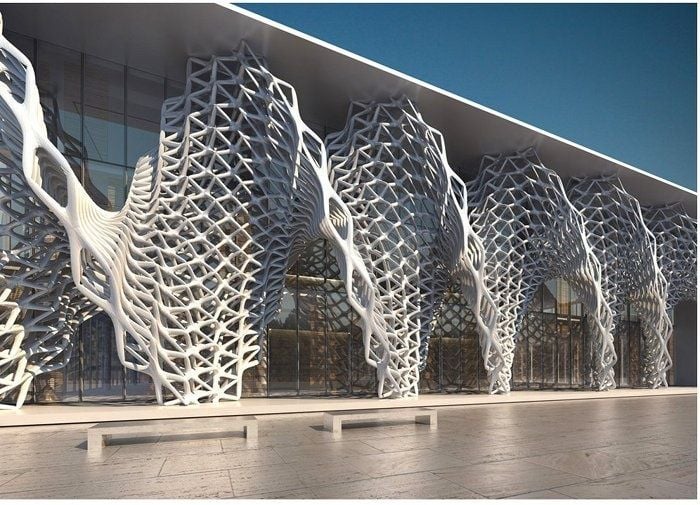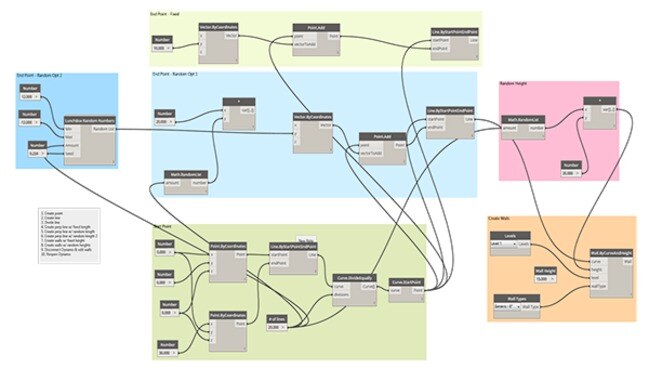Learn the Best Computational Design Software in 2025

Table of Contents
Architecture, Engineering, and Construction (AEC) is a dynamic industry where the demand for innovation and expertise grows daily. Computational Design architecture is one emerging skill in the industry with the potential of a high-paying job. It is an innovative approach and holds the power to create, analyse, and optimise architectural designs via digital tools. With this, the architects who possess this skill are becoming the top commodities in the job market, and have you wondered why? It is precisely because it enables them to create intricate structures, responding to parameters like client needs, site conditions, and other environmental factors.
Read the blog to explore Computational Design, its benefits, and the best computational design software to learn in 2025. Whether you are an aspiring architect or an industry professional willing to understand the future of Computational Design architecture, we are here to help you!
What is Computational Design? 
Who doesn’t want a powerful tool to turn architectural dreams into reality? This is what Computational Design does for you. It is a cutting-edge technology that uses different algorithms and parameters to help engineers, architects, and designers create unique and innovative design structures. It involves many data-driven approaches like automation, which enables them to work creatively, efficiently, and accurately.
Some key aspects of Computational Design are generative design, parametric design, complex geometry, optimisation, performance analysis, and more. It allows them to add edit variables, explore other possibilities, track real-time performance, and create complex geometric. There have been times when designers have relied on manual processes to solve design problems. Still, with the help of Computational Design software, designers can enhance that process by encoding design decisions via a computer language.
Also check out: Mentor's Advice: How to Start a Successful Learning Journey for a Career in Computational Design
Benefits of Computational Design

Since computers were invented, humans can easily perform complex jobs. Computers have influenced the AEC industry in a significant way that uses computers for specific algorithms. Here are the key benefits of Computational Design software:
1. Enhances Productivity
Computational Design software allows designers to save time by automating repetitive tasks and lets them focus on the creative and high-value points of the project.
2. Data-Driven Decisions
Design options are generated and assessed using data and algorithms in Computational Design. With real-time analysis and simulations, this data-driven approach encourages designers to make well-informed decisions, leading to more efficient and effective design creation.
3. Parametric Modelling
Computational Design facilitates parametric modelling, where design parameters and relationships are defined. This allows designers to explore various design options by adjusting the parameters, leading to more innovative and unique designs.
4. Saves Time and Cost
Computational Design reduces project completion times by automating tasks and maximising the design process. Clients and stakeholders can also save money thanks to the Computational Design software.
Also check out: How to level up your Architecture Career with Computational Design
Best Computational Design Software You Should Learn in 2025 
Computational Design software is the game changer for every firm. It helps save time and money, letting you create better products, and boosting the team's productivity. However, finding the right software can be a challenging task. To make it easier for you, here are the top Computational Design software that you should learn in 2025:
1. Rhinoceros 3D
Rhinoceros is also known as Rhino 3D or Rhino, a versatile 3D modelling software developed by Robert McNeel & Associates. It is a surface modelling tool with multiple prospects that helps create designs. It is based on the Non-Uniform Rational Basis Spline (NURBS) model, which helps develop specific curves and surfaces based on the criteria. The best part about Rhino is that it helps precisely develop the most complex geometries. Rhino is used vastly in various industries, including architecture, jewellery design, product design, etc. It allows users to enhance its functionality by adding Plugins, making it easy to enhance files with other designing software. So, if you want to get computational design architecture jobs, it is one of the essential tools you should know.
2. Grasshopper
Grasshopper is a visual programming language and plugin available for the well-known 3D modelling program Rhino (Rhinoceros 3D). It is widely used for Computational Design, parametric modelling, and generative design in architecture, design, and engineering. The benefit of this Computational Design software is a node-based visual programming process, which allows the designers to create and manipulate various algorithms by connecting the nodes. It can also be extended with custom scripts and plugins, allowing users to create designs to meet their specific requirements. Grasshopper is a tool that helps with data visualisation and data-driven design. This is useful in data analysis, urban planning, and architecture, among other fields.
3. Marionette
Marionette is a visual scripting tool developed by Vectorworks, a top software supplier to the design and architecture sectors. It is primarily used as a parametric and generative design software suite component. Marionette offers a visual scripting interface using a graphical node-based system that enables users to create and modify parametric designs. Users will find it easier to comprehend and operate with complex design algorithms when using this visual approach. Marionette automates calculations and repetitive tasks to increase efficiency in the design process. It also enhances accuracy by ensuring design changes propagate correctly throughout the project.
4. Dynamo
Dynamo is a visual programming software that allows designers to automate tasks, create custom algorithms, and control the data. It offers an easy-to-use interface to create scripts that work in various software environments and applications. Because of its adaptability, Dynamo can be integrated into other design and engineering tools, even though it is primarily linked to programs like Autodesk Revit and Rhino. To get the best computational design architecture jobs, you can add this software to your learning list for 20234.
5. Param-0
Param-0 is a software tool for computational and parametric design. It gives engineers, designers, and architects the power to generate, work with, and develop complicated parametric design models. The program can be added to current design workflows to improve the functionality of other design programs. Because of its compatibility, Param-0 is certain to enhance current processes rather than result in their failure. It is an invaluable tool for designers who want to produce creative and efficient, along with modification choices and capability for task automation.
Also check out: Understanding Computational Design (The Ultimate Guide) - 2025
Conclusion
Computational Design is at the forefront of revolution and innovation in the AEC industry. This specialisation can help you get access to the best Computational Design architecture jobs with a high pay scale. It will unlock new creative avenues for all industries, collectively shaping the digital era. So, push the boundaries of what is achievable and lead to more informed decision-making and better outcomes.
Reach out to Novatr and apply for the Master Computational Design Course today to upskill at the 1/10th price of a traditional master’s degree. This course will teach you the best tools to unlock creativity and improve productivity.
Head to our resource pages for more details regarding the latest AEC industry trends!

 Thanks for connecting!
Thanks for connecting!

%20(1).png)
%20(1).png?width=767&height=168&name=MCD%20B%20(Course%20Banner)%20(1).png)
.png)
.jpg)


.png)
